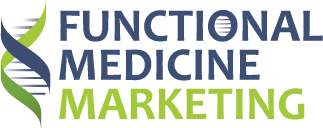Marketing a clinic in today’s competitive healthcare landscape isn’t about shouting the loudest—it’s about showing up where your ideal patients are looking, building trust, and delivering value that sets you apart. Whether you’re a nutritionist launching your solo practice, a growing direct primary care (DPC) clinic, or a thriving med spa, the right marketing strategy will look different depending on your goals and services.
In this post, we’ll break down the core types of clinics and the platforms that work best for each, so you can create a marketing plan that gets results. Can’t wait to get started? Get our price list.
Types of Clinics (and What Makes Their Marketing Unique)
The first step is to hone in on your unique approach. A hospital-based primary care clinic is going to be much different from a one-person naturopathic practice on Main Street. Figure out what you do and what you do best and then build a marketing campaign around that.
1. Nutritionists and Health Coaches
Nutritionists often operate solo or in small teams, focusing on food-based wellness plans, weight management, and gut health.
Marketing Focus:
- Educating the public
- Building long-term trust
- Driving engagement with content
Big Wins:
- Content marketing (blogs, videos, newsletters)
- Instagram and Pinterest for recipes, transformations, and quick tips
- Speaking locally (gyms, corporate wellness events)
2. Functional and Integrative Medicine Clinics
These clinics emphasize root-cause care, advanced testing, and long-term wellness—often with cash-pay models.
Marketing Focus:
- Explaining complex concepts in simple ways
- Showing advanced technology and protocols
- Building authority
Big Wins:
- YouTube and webinars for patient education
- Email nurture sequences for warm leads
- SEO + Google My Business to rank for terms like “thyroid doctor near me” or “functional medicine for fatigue”
3. Direct Primary Care (DPC) Clinics
DPC clinics thrive on memberships and long-term relationships, often bypassing insurance.
Marketing Focus:
- Communicating accessibility and affordability
- Highlighting the doctor-patient relationship
- Promoting transparency
Big Wins:
- Google Ads with keywords like “affordable doctor near me”
- Local SEO and community events
- Video testimonials about real-life savings and outcomes
4. Med Spas and Aesthetic Clinics
Med spas serve a highly visual, consumer-driven clientele looking for cosmetic treatments.
Marketing Focus:
- Before-and-after results
- Promotions and special offers
- Strong branding and design
Big Wins:
- Instagram Reels and TikTok for quick transformations
- Facebook Ads with high-quality imagery
- Online booking integrations with email and text campaigns
Key Marketing Platforms to Consider (For Any Clinic)
Regardless of your specialty, some platforms and tools are nearly universal when it comes to building a strong online presence.
1. Your Website
- Mobile-friendly, fast-loading, and HIPAA-conscious
- Includes online booking or lead capture
- SEO-optimized for your services and location
2. Google Business Profile
- Critical for local visibility
- Collect reviews, post updates, and rank for “near me” searches
3. Email Marketing
- Keep your current and prospective patients engaged
- Use for newsletters, education, and promoting new services
- Automate sequences for new leads
4. Social Media
- Choose based on your audience (Instagram and TikTok for aesthetics; Facebook for local outreach; LinkedIn for professionals)
- Be consistent with branding and tone
- Use video and stories to build trust
5. Online Reviews & Reputation Management
- Ask happy patients for reviews—especially on Google and Healthgrades
- Respond to all reviews, good or bad
- Monitor your reputation regularly
6. Paid Advertising
- Google Ads for direct search intent (e.g., “hormone doctor in Denver”)
- Facebook/Instagram Ads for brand awareness and lead generation
- Retargeting ads to bring back website visitors
The Reality of Cost Per Acquisition
Marketing isn’t instant. Whether you’re paying for ads or investing in content and SEO, there’s always a cost per acquisition (CPA)—and it might feel high at first.
Especially in the early stages, it’s not uncommon to spend $100–$300+ in marketing for each new patient who actually books. That includes ad spend, staff time, software subscriptions, and more.
But here’s the key: in healthcare, lifetime value (LTV) is typically high. A functional medicine patient may stay with your clinic for years. A med spa client might return monthly. A DPC member could refer an entire family. So while upfront costs feel steep, the return can grow significantly over time, especially if you track and optimize your pipeline.
Building Momentum: Why the First Few Patients Matter Most
One of the most overlooked marketing engines? Word of mouth.
Getting your first few patients through the door—even if it takes time—can set off a chain reaction. People talk. They tell their coworkers, gym buddies, and neighbors. Especially if you’re in a community-based practice or a niche market, one happy patient can lead to five more over time.
Your job:
- Deliver an amazing experience
- Ask for reviews
- Ask for referrals
- Stay visible so people can find you when that friend tells them your name
Marketing takes time to ramp up. But once you get traction, it often compounds.
Final Thoughts: Start With Strategy
Don’t try to be everywhere at once. Start with your audience, your budget, and your bandwidth. A nutritionist with a strong blog and local partnerships may outperform a flashy Instagram campaign. A DPC doctor who ranks #1 on Google locally will fill their panel faster than someone with no local visibility.
Choose platforms that match your strengths and align with how your ideal patients find and engage with healthcare. Build momentum—and then scale.
If clinic marketing sounds overwhelming to you, then you’re in the right place. Functional Medicine Marketing has been helping clinic owners expand their businesses and reach new patients. Our process is tried-and-true. Let’s get in touch.


Recent Comments